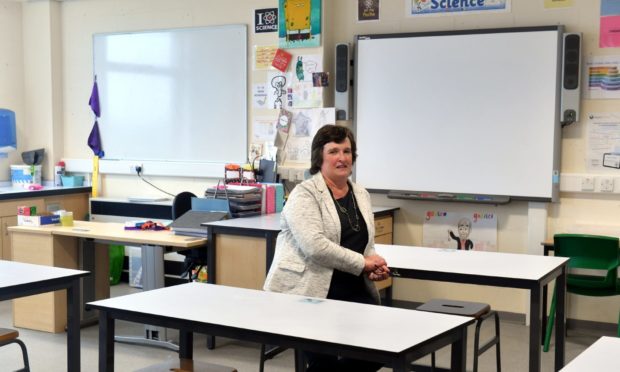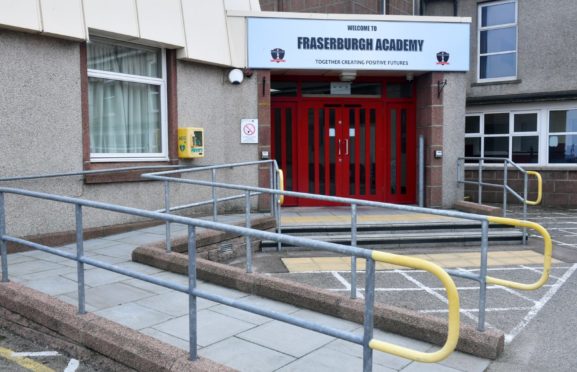Cultural “traditions” are being partly blamed for an unusually high number of youngsters leaving one north-east secondary school before reaching their fifth or sixth year there.
A large proportion of Fraserburgh Academy pupils are choosing to leave school after their fourth year, according to the latest attainment figures from Aberdeenshire Council.
The young S4 leavers’ figures for the Dennyduff Road school, shared with councillors this week, are “significantly above” the national average and exactly double the number of nearby Banff Academy.
In the latest academic year 26% of the 196 pupils opted out of school after S4, that compares to 15% of the 2,531 who left across Aberdeenshire as a whole, and is well above the 11.4% of the 47,435 youngsters who left in fourth year nationally.
Culture in the community
Fraserburgh Academy headteacher Irene Sharp said the reasonings for so many pupils leaving after S4 include the school’s close relationship with the North East Scotland College (Nescol) and “cultural” opinions.
She said: “In our fourth year an unprecedented 40% of our cohort have a Nescol course as part of their curriculum.
“This is not an add on, it’s part of the curriculum and because of the success of this it encourages them to follow on with a college education.
“We have to state the obvious in that the proximity of Nescol helps us as we capitalise on what’s on our doorstep.
“There’s an average of 98% of our leavers have a positive destination and a lot of that is due to the fact that we have a very strong ‘developing the young workforce’ theme throughout the school and, in particular, in third year.
“These strategies mean that our learners are work ready, perhaps before some others.
“There’s a culture within the local community that it’s best to leave in fourth year and some people do believe that and get a job.
“That is something we are challenging because it’s not always the best for young people.
“An initial analysis of this year’s fourth year shows a larger number are intending to stay on to fifth and six year because of their experience in the past year.”
Focus on employability
The latest report also showed the percentage of pupils achieving a “positive destination” after school was also down slightly, but is still 95%.
Of the 196 leavers in the past year, Ms Sharp said just six are not employed and, of those, three have jobs in the pipeline.
Literacy and numeracy targets have previously been highlighted as particular areas needing improvement across the school.
Fraserburgh councillor Andy Kille questioned what could be done to redress dwindling achievements in the lowest-performing 20% of children.
“The highest 20% seem to have improved very well, the middle have improved very well but the lowest seem to have gone back a bit,” he said.
“Closing the attainment gap is great, but this seems to have widened and we can’t close that gap by holding back the highest 20%. We need to be bringing up the lowest 20%.”
The school put in place additional pupil support staff, a pathways scheme leader, and a councillor as well as creating new projects to focus on additional support where needed.
‘Like spinning plates’
Ms Sharp added: “In terms of closing the gap, we have a plan for next year to get in early with learners and start in first year in identifying learners for whom there is a gap and working with them because we feel that getting in early is the answer.
“Our developments in the additional support for learners department, we hope, will help raise that lowest attaining 20%.
“But it’s like spinning plates, we’ve got to keep the highest, lowest and the middle going as well…but it’s a subject very close to my heart and I really want to see that lowest attaining 20% rise and we have a number of plans to do that.
“We will continue our relentless focus on raising attainment and in particular the lowest 20% in S4 and S5.”

